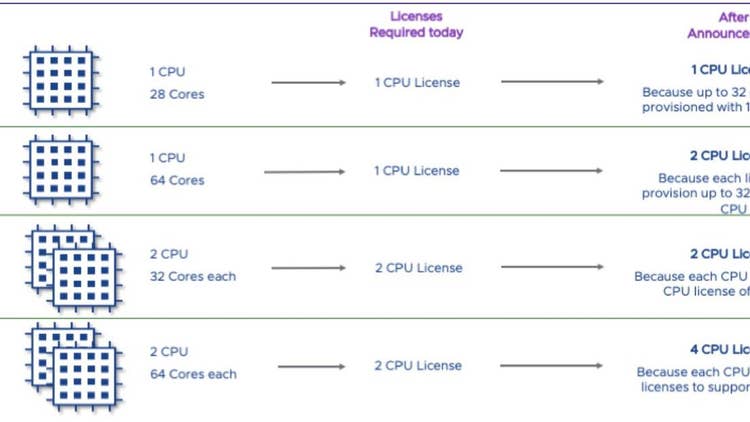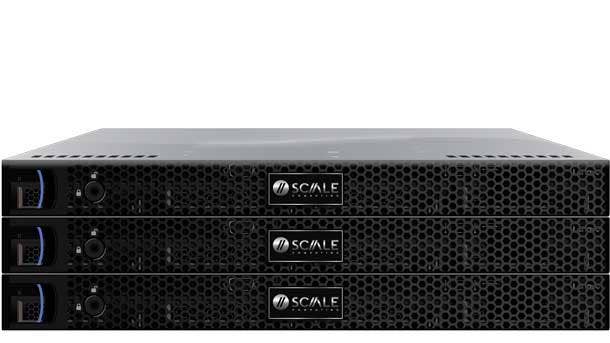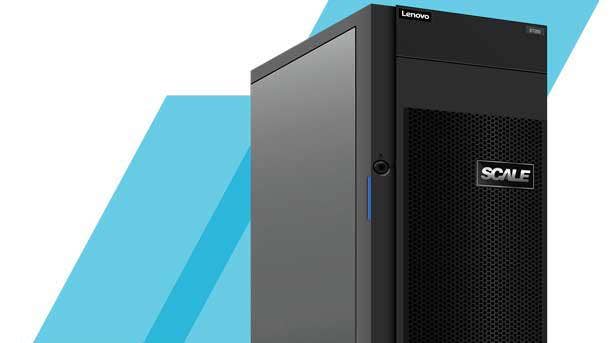Scale Computing CEO Jeff Ready Slams VMware Licensing Increase
‘I’d imagine that there’s a lot of customers who are scratching their head over what this means for them and perhaps opens the doors for us and our partners when those customers come up for renewal,’ says Scale Computing CEO Jeff Ready in an interview with CRN.

Jeff Ready: VMware’s Licensing Change ‘Strengthens Our Story’
Scale Computing CEO Jeff Ready says VMware’s plan to increase the cost of its CPU software licensing for customers who have more than 32 cores will open new doors for his company and help further differentiate Scale Computing at the edge.
“I’ve seen a bunch of customers that want to move over to those higher-core-count types of CPUs. Now all of a sudden, ‘Oh, one VMware license doesn’t cover you anymore. You’re going to need two, or four, or whatever amount of licensing it works out to be.’ While that hurts everybody, it’s evidence that maybe VMware doesn’t understand the edge computing in the midmarket where we play,” said Ready in an interview with CRN. “I give the marketing department props for coming up with some spin, but at the end of the day it’s a price increase.”
Effective April 2, 2020, VMware is changing its per-CPU pricing model in which any software offering that VMware licenses on a per-CPU basis, VMware will require one license for up to 32 physical cores. If a CPU has more than 32 cores, additional CPU licenses will need to be purchased. The Palo Alto, Calif.-based company said the change “moves VMware closer to the current software-industry-standard model of core-based pricing. This approach will make it easier for customers to compare software licensing and pricing between VMware [using per-CPU with up to 32 cores] and other vendors [using per-core pricing]. It also helps us keep our pricing simple and relevant to where the hardware market is going.”
At the broadest level, Ready says the licensing change “is a punch to the nose to AMD.”
Here’s what Scale Computing’s CEO has to say about VMware’s licensing increase and its effect on the market.

What is your take on VMware’s licensing change?
At the highest level, this is a punch to the nose to AMD. AMD sees an opportunity to build higher-core-count single CPUs because they have licensing advantages and other advantages as well, but one of the big ones is that licensing advantage. I’ve seen a bunch of customers that want to move over to those higher-core-count types of CPUs. Now all of a sudden, ‘Oh, one VMware license doesn’t cover you anymore. You’re going to need two, or four, or whatever amount of licensing it works out to be.’ While that hurts everybody, it’s evidence that maybe VMware doesn’t understand the edge computing in the midmarket where we play.
I can see instances where, if I’m trying to run VDI [virtual desktop infrastructure] at the edge—whether that’s a remote office or a retail establishment—and I’m looking to deploy a single CPU in one box or in one cluster, you can see how these costs can go way up. If I go from, ‘I need one license in one server or I need one license across three different servers in a cluster,’ if all of a sudden I double or triple that licensing cost, that could tank the entire infrastructure. Because that licensing for VMware is a big part of the expense of deploying something out in those edge environments. Now it’s potentially much worse. All of that is fine by me, of course. It strengthens our story.

How does this ‘strengthen’ Scale Computing’s story and go-to-market?
It just strengthens our story in two ways. Number one, for those kinds of high-core- count deployments our pricing is going to be even better than it was before versus VMware. And more importantly, it is about the philosophy that is being shown, which is Scale Computing is less expensive for those environments because we’re building it for those environments. You wouldn’t make this kind of call if you were really worried about, ‘I have this on-premises video surveillance system.’ The cost of virtualization licensing is not what you want to be a big part of that deal.
Then philosophically, who’s got your back when you’re looking at these kind of edge environments where you’re deploying hundreds or thousands of servers? I’d imagine that there’s a lot of customers who are scratching their head over what this means for them and perhaps opens the doors for us and our partners when those customers come up for renewal.

VMware says it is doing this to move closer to the software industry standard of core-based pricing and make it easier for customers to compare software licensing and pricing. Do you think that’s a justifiable reason?
The language they used was pretty funny saying that, ‘Oh, we’re just following industry standards.’ I don’t know about that. Anyone who is a customer is just like, ‘Wait, you’re just raising the price right? That’s all that’s happening here.’
Some of these CPUs that are potentially effective—I wouldn’t call them low-end consumer-grade CPUs—but certainly if you’re a gamer there’s AMD Threadripper and stuff like this on these 64-core, 128-thread CPUs that now you need two licenses for. I give the marketing department props for coming up with some spin, but at the end of the day it’s a price increase. VMware is saying, ‘For faster CPUs and for bigger CPUs, you’ve got to pay more.’ When you say, ‘In the data center, I’m deploying 20 servers’— that’s one thing, it’s a [reasonably small] problem. But if it’s an edge environment where I’m deploying 2,000 or 20,000 servers—that’s a huge deal. Our position is, look, we were less expensive before, we are even more so now.

How do you think this change affects channel partners?
The worst-case scenario, I’m a partner who just sold a customer on a VMware implementation last week. Now all of a sudden, I’m looking at a completely different pricing model or a higher pricing model. Maybe that customer win was meant to be the initial deal of a project [that will have] 10 times as many site deployments. All of a sudden, the costs are radically changed.
Or if I’m a channel partner who deployed something in a customer five years ago, now when that renewal comes up, suddenly there’s new questions. There’s new questions that a customer and a partner need to ask. They’re saying, ‘OK, this is not just a run-of- the-mill, let’s re-up your license and get you a new version.’ This is a, ‘Hey, maybe we need to re-evaluate what makes the most sense for our environment.’

Do you think this will open the door for Scale Computing partners?
When a Scale Computing channel partner sees these types of opportunities, it’s great. Most Scale Computing partners are also VMware partners because VMware has been around for a long time. It’s always, ‘When is the right opportunity to introduce new technology to an account?’ If it’s just a simple renewal, it might not be the best opportunity. But now, I would say the number of those opportunities goes up. There are more conversations channel partners can have with customers to say, ‘Look, here’s one path—you can see where VMware is headed. On the other hand, here is the alternative.’ It’s not just about pricing. It’s the ease of use, the self-healing and all these other things Scale Computing brings to the table, but now maybe I’ve got a little bit more of your attention because of this pricing change. Attention is what channel partners need. Channel partners have a lot of knowledge and a lot of great solutions.